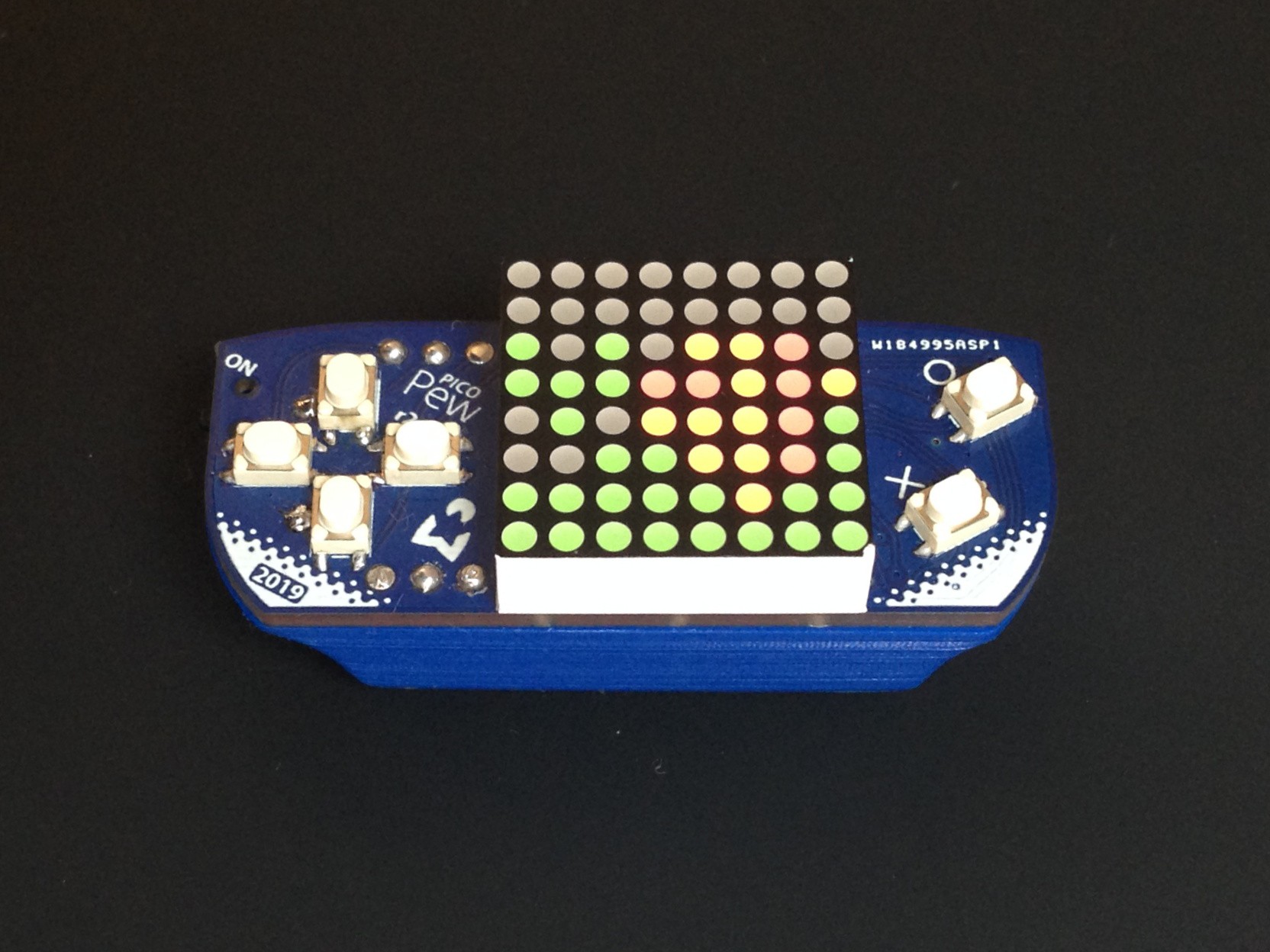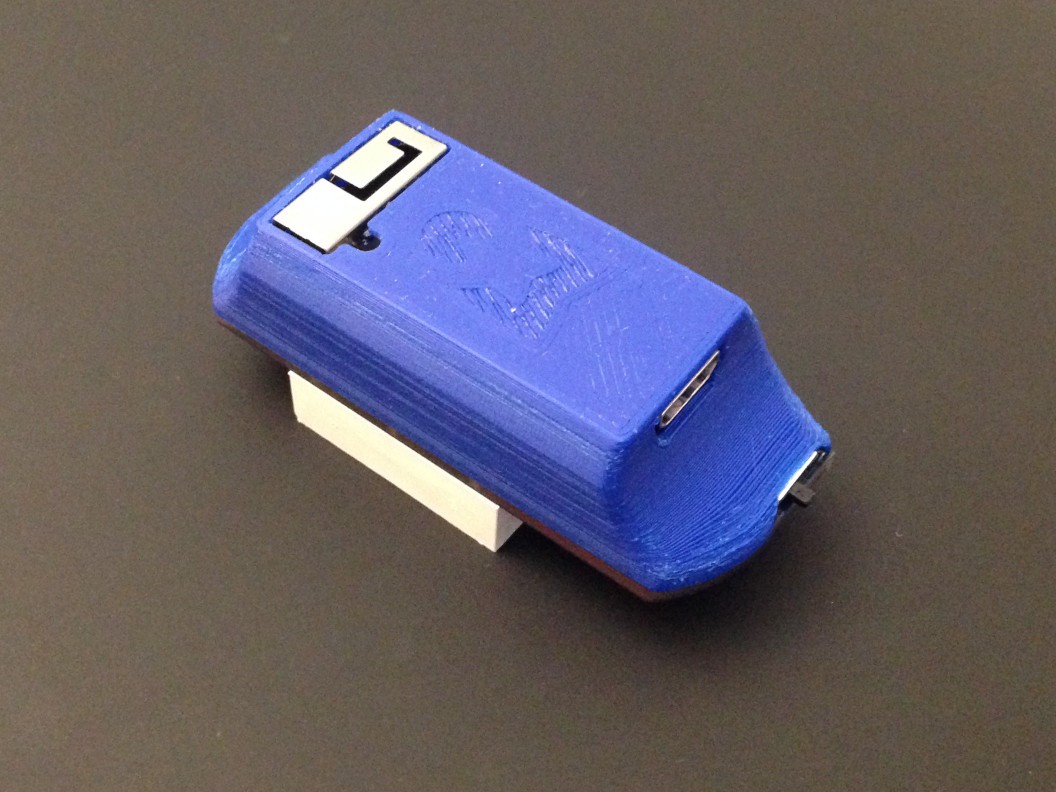
The first r2 PicoPew was successfully assembled and appears to be working fine. This time I did both sides in the reflow oven, that worked without the IC and switch falling off from the underside. I’m pretty happy with the r2 layout and don’t see any immediate need for a further revision.
In parallel, I was working on making the device more comfortable to hold. In particular the power switch has sharp corners that cut into one‘s fingers. Since I couldn‘t find any other place for that switch on the crowded board, I decided that the only way out would be to cover it with some kind of enclosure. That would have the added benefit of protecting the electronics from potential ESD damage from constantly touching the contacts, and the exposed components of the TinyPICO from mechanical damage.
I briefly thought about laser-cut wood or acrylic, similar to the PewPew Standalone frame, but then settled on 3D printing a plastic shell. I designed it in Onshape with the main goal of adding no thickness to the device and generally using as little volume as possible. For this reason, the antenna is still exposed, but its surface sits flush with the bottom of the case, which otherwise covers all of the TinyPICO. The case is held in place by friction-fitting on the TinyPICO, no stronger attachment is needed because during use it is pressed against the PicoPew board anyway. The shrink-wrap-like interpolation between the rectangular shape of the TinyPICO and the wider, rounded PicoPew board looks a bit awkward, but makes for nice rounded indentations for the index fingers. After printing a first version and applying some tweaks to the design (for one thing, I had forgotten to leave holes for the charging LED and dotstar), I printed the second revision yesterday and am satisfied with it for now.

The design files for the hardware as well as the software are now available on GitHub. The enclosure design is in Onshape.
 Christian Walther
Christian Walther
Discussions
Become a Hackaday.io Member
Create an account to leave a comment. Already have an account? Log In.